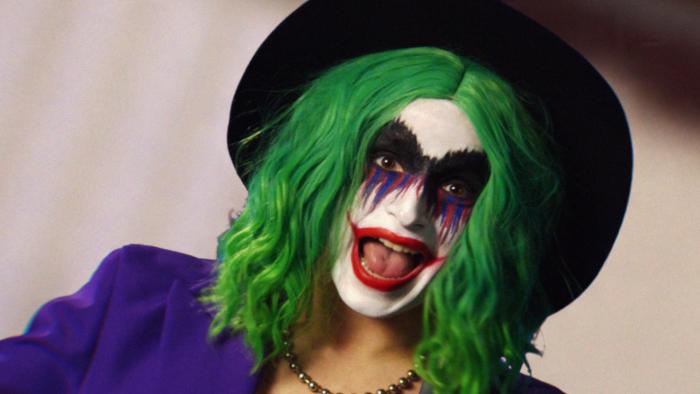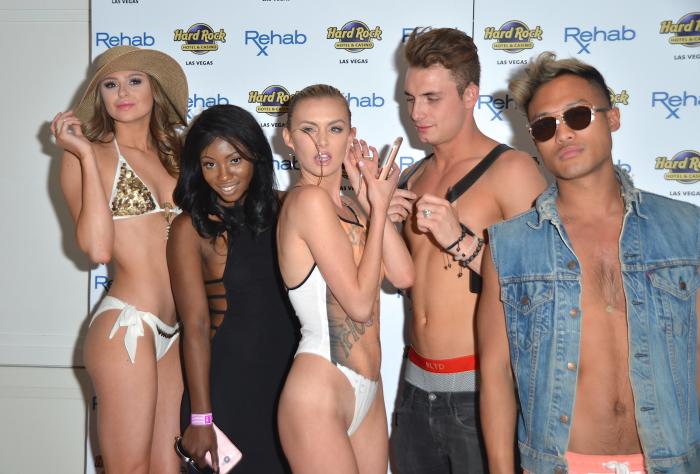

'The People’s Joker' Is One of the Best and Most Subversive Comic Book Movies
By Sara Clements | Film | April 8, 2024 |
By Sara Clements | Film | April 8, 2024 |

We all love an underdog story — and The People’s Joker is exactly that. Director, editor, co-writer, and star Vera Drew takes inspiration from DC Comics, specifically the villain, Joker, to tell the story of Joker the Harlequin, a trans woman who flees her small midwestern town to make it in the comedy world. The People’s Joker is both parody and autobiographical. Drew details her own trans journey in the framework of a story she loves. However, as you can expect, using the Batman IP meant going head-to-head with David Zaslav. Its premier at the Toronto International Film Festival (TIFF) in 2022 was met with a letter from Warner Bros. Discovery alleging copyright infringement. The film premiered but every subsequent screening was canceled, resulting in the film going underground, screening in secret. Its fate remained in limbo, but now it’s finally kicking off its theatrical run, beginning at New York City’s IFC Center. Joker the Harlequin gets the last laugh.
The film begins with a disclaimer that emphasizes the term “fair use” under the Copyright Act. For the purposes of “relevant criticism and social commentary,” artists should be allowed to use IP if they wish - and Drew crafts her criticism and commentary with a razor-sharp edge. By using Joker, a queer-coded villain, to tell her personal coming out story, it plays on and takes power over the concept of “queer monstrosity.” Villains have been coded as queer in film since its inception as a way for that representation to go unnoticed. With The People’s Joker, it’s refreshingly right in our face. It’s a big “fuck you” to nerd culture and the toxic masculinity that permeates it. The Clown Prince of Crime’s more fluid take on gender is perfect to play with, and it also works to speak on the villainization of trans people in today’s political landscape. In this way, The People’s Joker not only creates one of the most unique autobiographical stories of all time but also one of the most unique comic book movies.
Like most comic book stories, this one begins with an origin story. “As far back as I can remember,” Joker the Harlequin narrates, “I always wanted to be a joker.” As a Midwest kid living in Smallville, Joker, whose dead name is bleeped out, sought comfort in trash cable TV and comedy shows like United Clown Bureau Live (a riff on SNL). Small-town queer kids know that a well-received coming out is rare. For Joker, this is no different. After coming out to her single mom, Joker is sent to Arkham Asylum and put on an experimental smile-inducing drug, so Joker can always be a “happy little boy” in her mother’s eyes. Putting on a happy face keeps her mother happy and laughter keeps any accusations from friends about her sexuality at bay. As she explains in one of many moments of intimate narration, Joker discovers comedy as a way to repress her trans-feminity. Laughter is a shield.
Joker always dreamed of becoming a joke man, but here comes the rub: If you want to be telling jokes on the USB stage, you have to be a man (and if you’re a white guy you don’t even need to be funny!). Women in comedy can only be “harlequins” whose role is to dance sexy and laugh at all the male comedians’ jokes. While Joker was assigned the male gender at birth, life has become a “blurry, cracked mosaic” of gender revelations that have sparked endless questions and confusion about her gender identity. She soon makes the realization that she has no idea who she is. She has no identity. So begins a journey of self-discovery and transition — all colliding once she sets a course for a new life in Gotham City and finds a voice in underground comedy.
Apart from its autobiographical context, Drew probably never intended for her film to end up mirroring real life as much as it does. We learn that comedy in Gotham City is policed. Only those on USB can perform it. Taking digs at SNL brilliantly speaks to the state of the comedy world today. Its humor is strongest here. However, its commentary throughout is much stronger. Unintentionally or not, the film speaks to the policing of independent filmmaking. Feeling like USB isn’t a welcoming space for her, and with the enforced ban on comedy in Gotham, Joker creates an underground anti-comedy group with other famous Batman villains. Just like the secret screenings of Drew’s film, the Joker performs without eyes watching. Those at the top of the entertainment industry try to crush Drew’s freedom of expression, which is exactly what Gotham is doing to Joker and his crew.
It’s clear Drew loves Batman and you don’t have to be a Batman fan to enjoy The People’s Joker. The film’s noticeable use of green screen can often be distracting, but its DIY explosion of creativity emphasizes how much of a passion project this film is. A team of over 100 artists recreates iconic set pieces from various film adaptations of the Caped Crusader, and it also combines animation and live action flawlessly. Many elements of Joker’s own story arcs are recreated here to mirror Drew’s trans coming out journey. In the Batman comics, toxic relationships play a role in transformation. We see this with Harley Quinn when she falls in love with Joker. In The People’s Joker, the toxic relationship Joker the Harlequin has with her mother leads to her tracing the famous red smile and styling herself in the signature flamboyant purple suit and green wig. And when Joker the Harlequin falls in love with the toxic Mr. J (styled like Jared Leto’s version of the character from Suicide Squad), she’s not pushed into jumping into any old vat of chemicals, but a tank full of estrogen.
In our interview with Drew, she speaks on the mythos of superhero stories and how they belong to us. “Myths are about coming of age,” she says. “People like me — you know, poor, mentally ill, punk rock trans women — should be allowed to play with these toys.” When Drew was growing up, there was no trans representation in the media she sought comfort in. The only time she saw trans people was on late-night TV where they were treated like sideshow freaks. We want to see ourselves in the stories we love. She did with Joker. The People’s Joker is not only one of the most subversive comic book films but one that speaks to the liberation of creators from the clutches of greedy corporate hands.
← 'Drag Race' Star Q Has Somber Message for Fans: 'Try To Be More Kind' | There is No Way 'Sugar' Will Survive a Week-to-Week Rollout →
More Like This
There is No Way ‘Sugar’ Will Survive a Week-to-Week Rollout
'The People’s Joker' Is One of the Best and Most Subversive Comic Book Movies
Revenge Thriller 'Femme' Presents a New Kind of Femme Fatale
Spoilers: Netflix’s Korean Comedy 'Chicken Nugget' Is Getting Review-Bombed Over A Single Joke
How 'The Regime' and 'Palm Royale' Complicate Their Genres

‘Vanderpump Rules’ Alum Faith Stowers Suing Network for Racial Harassment
Star Of 'Civil War' Said It Was Hard To 'Shake It Off' After Filming
Molly Ringwald Watched This John Hughes Movie With Her Daughter, Says It Hasn't 'Aged Well'
Jonathan Majors Sentenced to Domestic Violence Counseling
Scarlett Johansson and Channing Tatum Fake the Moon Landing in 'Fly Me to the Moon'
Oliver Stark of '9-1-1' Is Not Interested In Your Homophobia
More Like This
There is No Way ‘Sugar’ Will Survive a Week-to-Week Rollout
'The People’s Joker' Is One of the Best and Most Subversive Comic Book Movies
Revenge Thriller 'Femme' Presents a New Kind of Femme Fatale
Spoilers: Netflix’s Korean Comedy 'Chicken Nugget' Is Getting Review-Bombed Over A Single Joke
How 'The Regime' and 'Palm Royale' Complicate Their Genres
Reviews